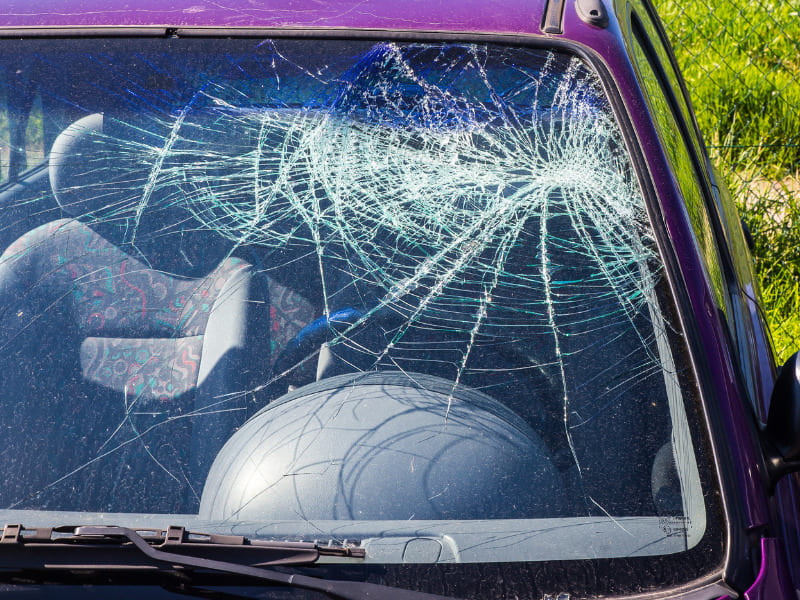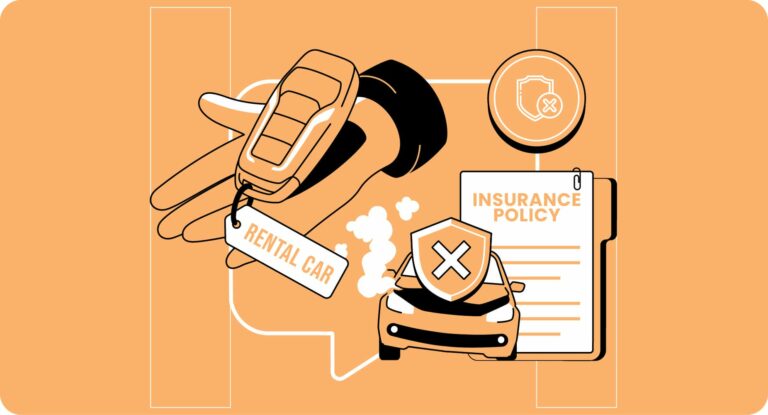Car accidents can be a stressful experience, and understanding your insurance policy can make a significant difference in how you handle the aftermath.
In California, it’s essential to know what happens when a car accident claim exceeds your insurance limits.
This guide will help you understand the implications and steps you can take to manage such situations effectively.
Average Car Accident Settlement Amount
| Statistic | Amount |
|---|---|
| Average Settlement (2020) | $20,000 – $25,000 |
| Average Injury Settlement | $20,235 |
| Average Property Damage Claim | $4,711 |
| Martindale-Nolo Average Settlement | $23,900 |
| Most Respondents’ Settlement | Less than $10,000 |
| Average Settlement Time | 10.7 months |
| No-Fault State Coverage | Up to $10,000 |
| Fault State Settlement | Varies |
| Higher Settlement for Severe Injuries | $29,700 |
| Settlement for Non-Injured Victims | $16,700 |
An Overview on Car Insurance Limits
Car insurance limits refer to the maximum amount an insurance company will pay out for a covered claim. For example, if you have a policy with a $50,000 limit, the insurer will not pay more than this amount for a claim.
If your damages exceed this limit, you could be responsible for the remaining costs. Understanding these limits is essential to avoid unexpected financial burdens.
Minimum Coverage Requirements
California requires drivers to carry minimum liability insurance, which includes bodily injury and property damage coverage. These minimums are set at $15,000 per person, $30,000 per accident for bodily injury, and $5,000 for property damage.
Many drivers choose higher limits to provide better protection against significant losses. Adequate coverage can prevent substantial out-of-pocket expenses.
Financial Consequences
If you cause an accident and the damages exceed your policy limits, you could face serious financial consequences.
Reviewing your policy and considering whether your limits are sufficient for your needs is wise. Higher limits offer a better financial safety net in the event of an accident.
Without adequate coverage, you might have to use personal assets to cover the excess costs.
Importance of Understanding Insurance Policies
Understanding your insurance policy is crucial for several reasons. It helps you know what coverage you have and what is excluded. It allows you to assess whether your coverage limits are adequate.
Additionally, it prepares you for dealing with insurance companies after an accident, ensuring you are not caught off guard by policy details.
Contractual Obligations
Your insurance policy is a contract between you and the insurance company. It outlines your rights and responsibilities, as well as the insurer’s obligations. Reading and understanding this document can prevent surprises when you file a claim.
Clear knowledge of your policy helps you communicate effectively with your insurer and advocate for your rights.
California’s Insurance Requirements
California law requires all drivers to carry a minimum amount of liability insurance. These requirements are designed to ensure that drivers can cover the costs of damages or injuries they cause in an accident.
The minimum required coverage includes $15,000 for injury or death to one person, $30,000 for injury or death to more than one person, and $5,000 for property damage.
Adequate Protection
Meeting these minimum requirements is essential, but it may not be enough to fully protect you in a severe accident.
Many drivers opt for higher coverage limits to safeguard their assets and provide greater financial security.
Regularly reviewing your policy ensures it meets your current needs and offers sufficient protection.
Staying Informed
Life changes, such as buying a new car or moving to a different area, can affect your coverage requirements.
Staying informed about California’s insurance laws and adjusting your policy accordingly can help you stay protected.
For personalized advice and support, consider consulting with Crockett Law Group. They can help you understand and manage your insurance coverage effectively.
Types of Car Insurance Coverage
Understanding the different types of car insurance coverage available can help you make informed decisions about your policy.
In California, drivers have several options for coverage, each providing varying levels of protection.
Liability Insurance
Liability insurance is the most basic type of car insurance and is required by law in California. It covers damages you cause to other people and their property in an accident. This includes bodily injury and property damage.
For example, if you cause an accident that injures another driver, your liability insurance will pay for their medical expenses up to your policy limit.
Liability insurance does not cover your injuries or vehicle damage.
Comprehensive Insurance
Comprehensive insurance provides coverage for non-collision-related incidents. This includes events such as theft, vandalism, natural disasters, and hitting an animal.
If your car is stolen or damaged by a storm, comprehensive insurance will help cover the repair or replacement costs. Comprehensive coverage is optional but highly recommended for added protection.
Collision Insurance
Collision insurance covers damage to your vehicle resulting from a collision with another vehicle or object.
Whether you hit a tree, another car, or a guardrail, collision insurance will help pay for the repairs to your car. This coverage is especially important if you have a newer or more expensive vehicle, as repair costs can be significant.
Collision insurance is optional but often required by lenders if you finance your car.
Uninsured/Underinsured Motorist Coverage
Uninsured/underinsured motorist coverage protects you if you are involved in an accident with a driver who either has no insurance or insufficient insurance to cover the damages. In California, this coverage is optional but highly recommended.
If you are hit by an uninsured driver, this coverage will help pay for your medical expenses and vehicle repairs. It provides peace of mind knowing you are protected even if the other driver is not adequately insured.
Medical Payments Coverage
Medical payments coverage, also known as MedPay, covers medical expenses for you and your passengers, regardless of who is at fault in an accident. This can include hospital visits, surgery, and even funeral expenses.
MedPay is optional but can be a valuable addition to your policy, especially if you do not have health insurance or have high deductibles.
Personal Injury Protection
Personal injury protection (PIP) is similar to medical payments coverage but offers more comprehensive benefits. In addition to medical expenses, PIP can cover lost wages, rehabilitation costs, and other related expenses.
PIP is not required in California but can provide extensive coverage in the event of an accident.
Coverage Limits Explained
Coverage limits are the maximum amounts your insurance company will pay for a covered claim.
For each type of coverage, you can choose different limits based on your needs and financial situation. Higher limits provide greater protection but also come with higher premiums.
It is crucial to evaluate your risks and choose limits that offer adequate coverage without exceeding your budget.
Minimum Coverage Requirements in California
California has specific minimum coverage requirements for drivers. These include $15,000 for injury or death to one person, $30,000 for injury or death to more than one person, and $5,000 for property damage.
While these minimums are mandatory, they may not be sufficient in a severe accident. Many drivers opt for higher limits to ensure they are fully protected.
Optional Coverages Available
In addition to the basic types of coverage, insurers offer several optional coverages. These can include rental reimbursement, roadside assistance, and gap insurance.
Optional coverages can enhance your policy and provide additional peace of mind. It’s important to review these options and consider adding them based on your specific needs.
How to Choose the Right Coverage
Selecting the right car insurance coverage is essential for your financial protection and peace of mind.
Different coverage options offer varying levels of protection, so it’s important to choose wisely based on your needs and circumstances.
- Assess Your Risks
- Evaluate Coverage Options
- Consider Your Budget
- Review Policy Exclusions
- Consult a Professional
What Happens When a Claim Exceeds Insurance Limits?
When a car accident claim exceeds your insurance limits, it can lead to complex legal and financial situations. Understanding what to do and what options are available can help you manage these challenges effectively.
Initial Steps After an Accident
Being involved in a car accident can be overwhelming, but knowing what to do immediately afterward can help protect your rights and facilitate the claims process.
Following these initial steps can make a significant difference in handling the situation effectively.
- Ensure Safety
- Call the Police
- Exchange Information
- Document the Scene
- Collect Witness Statements
Filing a Claim with Your Insurance Company
Once you have gathered the necessary information, contact your insurance company to file a claim.
Provide them with all relevant details about the accident, including photos and witness statements.
Your insurer will begin the evaluation process to determine the extent of the damages and your policy limits.
Insurance Company’s Evaluation Process
During the evaluation process, your insurance company will assess the damages and determine the amount they are liable to pay based on your policy limits. This involves reviewing repair estimates, medical bills, and other related expenses.
If the total damages exceed your coverage limits, your insurer will only pay up to the maximum amount specified in your policy. You will be responsible for any remaining costs.
Receiving the Insurance Payout
After the evaluation, your insurance company will issue a payout up to your policy limits. This payment will cover the damages and injuries as specified in your claim.
If the payout does not fully cover the costs, you will need to explore other options to address the remaining expenses. It’s essential to understand the details of the payout and what it covers.
Legal Obligations of the At-Fault Party
If you are the at-fault party in the accident, exceeding your insurance limits means you are legally responsible for the remaining damages. This could involve using your personal assets to cover the costs.
It’s important to understand your legal obligations and take steps to address the excess damages to avoid further legal complications.
Impact on the At-Fault Driver’s Assets
If the damages exceed your insurance limits and you are the at-fault driver, your personal assets may be at risk. This can include your savings, property, and other valuable assets.
Understanding the potential impact on your assets can help you make informed decisions about how to address the excess damages and protect your financial future.
Get Comprehensive Legal Help Now
If you are dealing with the complexities of an auto collision and need professional advice, Crockett Law Group today.
As your trusted Santa Ana auto collision attorney, we can help you navigate the legal and financial challenges.
Contact us at (800) 900-9393 for personalized support and guidance.










